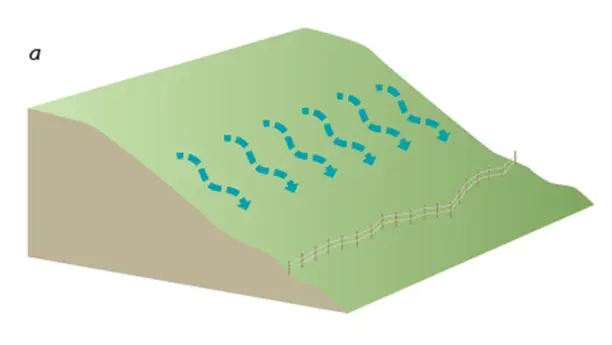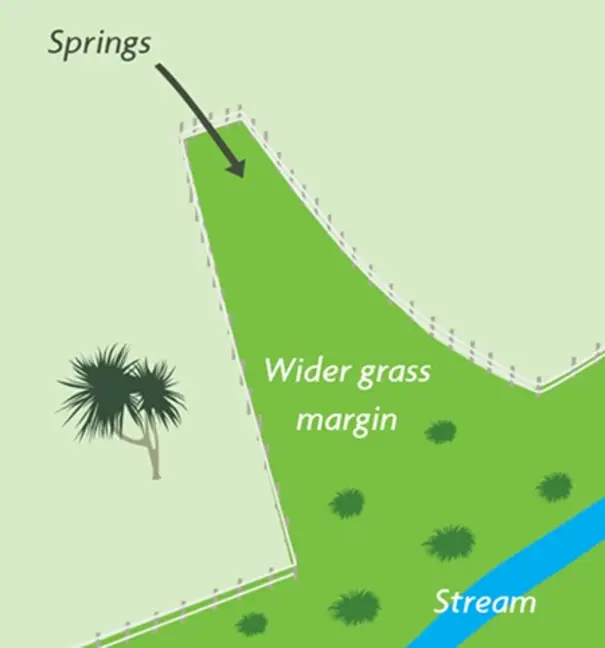Fencing
2 min read
Fencing waterways on your dairy farm protects freshwater from pollutants and creates a habitat for various species. When planning your fencing, consider farm layout and potential for improved grazing management. By law, you need to keep dairy cattle away from lakes and waterways wider than 1m, with new fences built at least 3m from the water. Adjust the buffer zone based on rainfall runoff, leaving wider grass buffers in more concentrated areas. You should also extend fencing to seeps, wetlands, swamps and springs. Keep in mind, fencing in flood-prone areas and around drains needs a strategic approach.
Fencing waterways protects freshwater from nutrients, effluent and sediment by excluding stock and creating a buffer between water and the land. Fencing will help to maintain and improve water quality and create a habitat for birds and freshwater species.
Waterway fencing needs to be far enough back to allow for movement/flooding of the waterway.
Start by mapping your waterways and create a fencing plan.
Consider the overall layout of your farm; along with protecting waterways, new fencing can improve grazing management and stock control.
Plan out fence lines and crossing points.
Under the nation-wide stock exclusion rules, all dairy cattle need to excluded from all lakes and waterways with a bed wider than 1m. All new fences erected after 3 August, 2020 need to be a minimum of 3m away from the waterway. If your fence was erected prior to 3 August, 2020 it does not need to be moved, unless it needs to be replaced, in which case it needs to comply with the 3m stock exclusion.
This rule is a minimum standard and regional council rules, and conditions of milk supply can be more stringent.
If you do need to erect a new fence or replace an existing fence it is best to create a variable width buffer. What we do know is that rainfall runoff from paddocks is not uniform and becomes concentrated into swales (common terms include critical source areas, depressions, run off channels)
In these areas, there is a benefit of leaving a wider grass buffer in these areas (see figure b above). In some instances, there will also be a benefit to exclude stock as well.
This approach means you don’t have to retire large areas of land (beyond the minimum now required) and the land you do retire will be the most at-risk areas where the benefit is the greatest.
In these situations, the best approach is to leave the wide buffers in these swales in rank grass. You may even want to consider a sediment trap. Where there are no swales, the use of riparian planting can provide instream water quality benefits and biodiversity benefits.

Additional benefits
Limitations